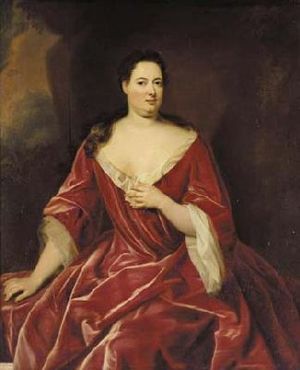Sophia von Kielmansegg, Countess of Darlington facts for kids
Sophia Charlotte von Kielmansegg (1675–1725) was an important woman who was born in Germany. She was the half-sister of George I of Great Britain, who later became the King of Great Britain. They were very close friends. In 1714, Sophia moved to England shortly after George became king. She quickly became a powerful person at his royal court.
Early Life and Family Connections
Sophia Charlotte was the daughter of Clara Elisabeth von Meysenburg. Her mother was married to Franz Ernst, Count von Platen-Hallermund. However, Sophia's father was actually Ernest Augustus, Elector of Brunswick-Lüneburg. He was married to Sophia of Hanover, who was in line to become queen of England and Scotland.
Because Ernest Augustus was her father, Sophia Charlotte was the half-sister of George Louis. George Louis later became the Elector of Hanover and then King George I of Great Britain. Sophia and George had a very strong and loyal friendship throughout their lives.
Life in England
When King George I moved to London, Sophia Charlotte went with him. At the royal court, she was a very influential person. She was known to be a rival of Melusine von der Schulenburg, Duchess of Kendal, another important woman close to the king.
King George I gave Sophia special titles. In 1721, she became the Countess of Leinster in Ireland. The next year, in 1722, she was also made the Countess of Darlington in Great Britain. She also received the smaller title of Baroness of Brentford.
Because she had direct access to the king, many people wanted her help. They would give her gifts, especially during a time known as the South Sea Bubble. This was a period when many people were trying to make money from a company called the South Sea Company. Sophia Charlotte died in her home in London on April 20, 1725.
Her Appearance
After she arrived in England in 1714, Sophia Charlotte was sometimes called "the Elephant and Castle." This nickname suggested she was a very large woman.
Horace Walpole, a famous writer, once described her:
I remember, as a boy, being terrified at her enormous figure. The fierce black eyes, large and rolling, beneath two lofty arched eyebrows, two acres of cheeks spread with crimson, an ocean of neck that overflowed and was not distinguished from the lower part of her body, and no part restrained by stays


